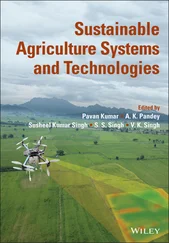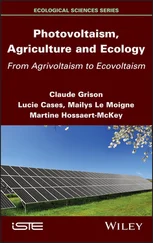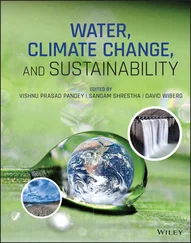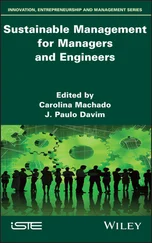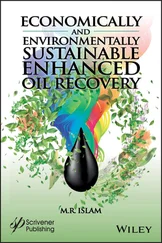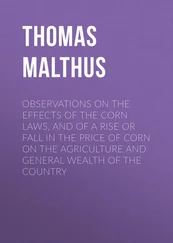1 Abdel Lateif, K., Bogus, D., and Hocher, V. (2012). The role of flavonoids in the establishment of plant roots endosymbioses with arbuscular mycorrhiza fungi, rhizobia and Frankia bacteria. Plant Signal. Behav. 7 (6): 636–641.
2 Ahmad, S., Veyrat, N., Gordon Weeks, R. et al. (2005). Benzoxazinoid metabolites regulate innate immunity against aphids and fungi in maize. Plant Physiol. 157 (1): 317–327. https://doi.org/10.1104/pp.111.180224.
3 Asao, T., Hasegawa, K., Sueda, Y. et al. (2003). Autotoxicity of root exudates from taro. Sci. Hortic. 97: 389–396. https://doi.org/10.1016/S0304‐4238(02)00197‐8.
4 Badri, D.V. and Vivanco, J.M. (2009). Regulation and function of root excudates. Plant Cell Environ. 32: 666–681.
5 Badri, D.V., Loyola‐Vargas, V.M., Broeckling, C.D. et al. (2008). Altered profile of secondary metabolites in the root exudates of Arabidopsis. Plant Physiol. 146 (2): 762–771.
6 Bais, H.P., Walker, T.S., Schweizer, H.P., and Vivanco, J.M. (2002). Root specific elicitation and antimicrobial activity of rosmarinic acid in hairy root cultures of sweet basil (Ocimumbasilicum L.). Plant Physiol. Biochem. 40: 983–995.
7 Bais, H.P., Prithiviraj, B., Jha, A.K. et al. (2005). Mediation of pathogen resistance by exudation of antimicrobials from roots. Nature 434: 217–221.
8 Bais, H.P., Weir, T.L., Perry, L.G. et al. (2006). The role of root exudates in rhizosphere interactions with plants and other organisms. Annu. Rev. Plant Biol. 57: 233–266.
9 Boldt‐Burisch, K., Bernd, U., Annenaeth, M., and Fhüttl, R. (2019). Root exudation of organic acids of herbaceous pioneer plants and their growth in sterile and non‐sterile nutrient‐poor, sandy soils from post‐mining sites. Pedosphere 29 (1): 34–44.
10 Brigham, L.A., Michaels, P.J., and Flores, H.E. (1999). Cell‐specific production and antimicrobial activity of naphthoquinones in roots of Lithospermumerythrorhizon. Plant Physiol. 119: 417–428.
11 Caetano‐Anolles, G., Crist‐Estes, D.K., and Bauer, D.W. (1988). Chemotaxis of Rhizobium meliloti to the plant flavone luteolin requires functional nodulation genes. J. Bacteriol. 170: 3164–3169.
12 Canarini, A., Kaiser, C., Merchant, A. et al. (2019). Root exudation of primary metabolites: mechanisms and their roles in plant responses to environmental stimuli. Front. Plant Sci. 10: 157. https://doi.org/10.3389/fpls.2019.00157.
13 Carlsen, S.C.K., Pedersen, H.A., Spliid, N.H., and Fomsgaard, I.S. (2012). Fate in soil of flavonoids released from white clover (Trifoliumrepens L.). Appl. Environ. Soil Sci. 2012: 1–10.
14 Carvalhais, L.C., Dennis, P.G., Fedoseyenko, D. et al. (2010). Root exudation of sugars, amino acids, and organic acids by maize as affected by nitrogen, phosphorus, potassium, and iron deficiency. J. Plant Nutr. Soil Sci. 174: 3–11.
15 Carvalhais, L.C., Dennis, P.G., Badri, D.V. et al. (2015). Linking jasmonic acid signalling, root excudates, and rhizosphere microbiomes. Mol. Plant Microb. Interact. 28 (9): 1049–1058.
16 Chaparro, J.M., Badri, D.V., Bakker, M.G. et al. (2013). Root exudation of phytochemicals in Arabidopsis follows specific patterns that are developmentally programmed and correlate with soil microbial functions. PLoS One 8 (2): e55731. https://doi.org/10.1371/journal.pone.0055731.
17 Dakora, F.D. (2000). Commonality of root nodulation signals and nitrogen assimilation in tropical grain legumes belonging to the tribe Phaseoleae. Aust. J. Plant Physiol. 27: 885–892.
18 De Weert, S., Vermeiren, H., Mulders, I.H.M. et al. (2002). Flagella‐driven chemotaxis towards exudate components is an important trait for tomato root colonization by Pseudomonas fluorescens. Mol. Plant Microbe Interact. 15 (11): 1173–1180.
19 Emily, M., Maureen, M., Carlos, M., and Maria, D.R. (2013). Development and application of crop exudates specific aptamers. J. Biomol. Struct. Dyn. 31 (sup1): 89–89.
20 Gargallo‐Garriga, A., Preece, C., Sardans, J. et al. (2018). Root exudate metabolomes change under drought and show limited capacity for recovery. Sci. Rep. 8: 12696. https://doi.org/10.1038/s41598‐018‐30150‐0.
21 Gfeller, A., Glauser, G., Etter, C. et al. (2018). Fagopyrum esculentum alters its root exudation after Amaranthus retroflexus recognition and suppresses weed growth. Front. Plant Sci. 9: 50. https://doi.org/10.3389/fpls.2018.00050.
22 Gifford, I., Battenberg, K., Vaniya, A. et al. (2018). Distinctive patterns of Flavonoid biosynthesis in roots and nodules of Datiscaglomerata and Medicago spp. revealed by metabolomic and gene expression profiles. Front. Plant Sci. 9: 1463. https://doi.org/10.3389/fpls.2018.01463.
23 Gomez‐Roldan, V., Soraya, F., Philip, B.B. et al. (2008). Strigolactone inhibition of shoot branching. Nature 455: 189–194.
24 Guo, J., McCulley, R.L., and McNear, D.H.J. (2015). Tall fescue cultivar and fungal endophyte combinations influence plant growth and root exudate composition. Front. Plant Sci. 6: 183. https://doi.org/10.3389/fpls.2015.00183.
25 Hoysted, G.A., Bell, C.A., Lilley, C.J., and Urwin, P.E. (2018). Aphid colonization affects potato root exudate composition and the hatching of a soil borne pathogen. Front. Plant Sci. 9: 1278. https://doi.org/10.3389/fpls.2018.01278.
26 Huang, X.F., Chaparro, J.M., Reardon, K.F. et al. (2014). Rhizosphere interactions: root exudates, microbes, and microbial communities. Botany 92: 267–275.
27 Jones, D.L. and Darrah, P.R. (1995). Influx and efflux of organic acids across the soil root interface of Zea mays L. and its implications in rhizosphere C flow. Plant and Soil 173: 103–109.
28 Karlowsky, S., Augusti, A., Ingrisch, J. et al. (2018). Drought‐induced accumulation of root exudates supports post‐drought recovery of microbes in mountain grassland. Front. Plant Sci. 9: 1593. https://doi.org/10.3389/fpls.2018.01593.
29 Kidd, P.S., Llugany, M., Poschenrieder, C. et al. (2001). The role of root exudates in aluminium resistance and silicon‐induced amelioration of aluminium toxicity in three varieties of maize (Zea mays L.). J. Exp. Bot. 52: 1339–1352.
30 Kuijken, R.C., van Eeuwijk, F.A., Marcelis, L.F., and Bouwmeester, H.J. (2015). Root phenotyping: from component trait in the lab to breeding. J. Exp. Bot. 66 (18): 5389–5401.
31 Lagrange, H., Jay‐Allgmand, C., and Lapeyrie, F. (2001). Rutin, the phenolglycoside from eucalyptus root exudates, stimulates Pisolithus hyphal growth at picomolar concentrations. New Phytol. 149: 349–355.
32 Lagunas, B., Schäfer, P., and Gifford, M.L. (2015). Housing helpful invaders: the evolutionary and molecular architecture underlying plant root‐mutualist microbe interactions. J. Exp. Bot. 66 (8): 2177–2186.
33 Lambert, M.R. (2015). Clover root exudate produces male‐biased sex ratios and accelerates male metamorphic timing in wood frogs. R. Soc. Open Sci. 2 (12): 1–8. https://doi.org/10.1098/rsos.150433.
34 Lareen, A., Burton, F., and Schafer, P. (2016). Plant root‐microbe communication in shaping root microbiomes. Plant Mol. Biol. 90 (6): 575–587.
35 Lima, L.D.S., Olivares, F.L., de Oliveira, R.R. et al. (2014). Root exudate profiling of maize seedlings inoculated with Herbaspirillumseropedicae and humic acids. Chem. Biol. Technol. Agric. 23 (1): 1–18.
36 Lopez‐Farfan, D., Reyes‐Darias, J.A., Matilla, M.A., and Krell, T. (2019). Concentration dependent effect of plant root exudates on the chemosensory systems of Pseudomonas putida KT2440. Front. Microbiol. 10: 78. https://doi.org/10.3389/fmicb.2019.00078.
37 Lu, H., Jianteng, S., and Lizhong, Z. (2017). The role of artificial root exudate components in facilitating the degradation of pyrene in soil. Sci. Rep. 7: 7130.
38 Luo, Q., Wang, S., Sun, L., and Wang, H. (2017). Metabolic profiling of root exudates from two ecotypes of Sedum alfredii treated with Pb based on GC‐MS. Sci. Rep. 7: 39878.
Читать дальше

